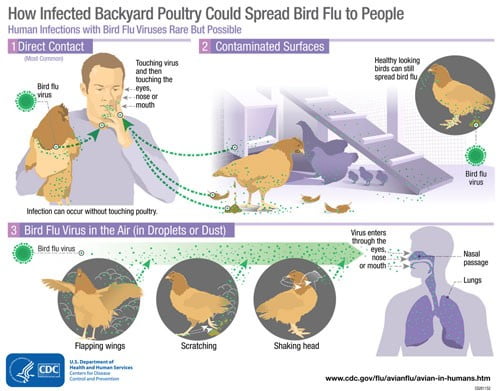Science and Technology
In News: Bird flu, a virus not known to spread easily among mammals, led to the culling of 50,000 minks in Spain.
- The findings indicated at least one mutation in the virus’ genome, which may make mammal-to-mammal infection easier.
- It is possible the minks were infected via seabirds in Galicia, a region in Spain, carrying the H5N1 virus since they were kept in an open cage and possibly interacted with the wild birds
Bird flu

- Avian influenza or bird flu refers to the disease caused by infection with avian (bird) influenza (flu) Type A viruses H5N1.
- These viruses naturally spread among wild aquatic birds worldwide and can infect domestic poultry and other bird and animal species.
- Bird flu viruses do not normally infect humans. However, sporadic human infections with bird flu viruses have occurred.
- Typically, mammals catch the avian influenza directly from infected birds, through the consumption of bird droppings or preying on infected animals.
- However, within-mammal transmission was uncharacteristic of the virus until now.
- Poultry birds across Europe, Asia, Africa and North America have been victim to the highly infectious strain of the avian influenza virus.
- The virus H5N1 is evolving and may be gaining pandemic potential as its mutation is the same mutation that was recorded in the gene of the 2009 pandemic swine-origin influenza A (H1N1) virus.
Source: DTE
Previous Year Questions
Q.1) Consider the following statements: (2017)
- In tropical regions, Zika virus disease is transmitted by ‘the same mosquito that transmits dengue.
- Sexual transmission of Zika virus disease is possible
Which of the statements given above is/are correct?
- 1 only
- 2 only
- Both 1 and 2
- Neither 1 nor 2
Q.2) H1N1 virus is sometimes mentioned in the news with reference to which one of the following diseases? (2015)
- AIDS
- Bird flu
- Dengue
- Swine flu














